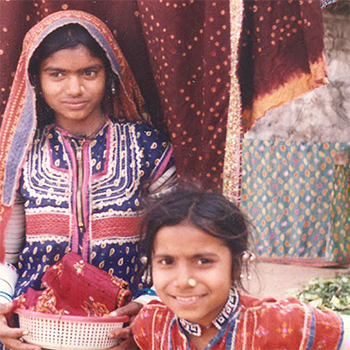Kutch is an ancient land located in the north-western region of Gujarat, the westernmost state of India. It has a rich history due to its strategic location on the historic route to India. It is bordered by the flat desert locally known as the "Rann" on the north and the east. The Rann is a unique feature found nowhere else in the world. Kutch is bounded by the Arabian Sea to the west and southwest and by the Gulf of Kutch to the south. The Kutch region can be divided into three parts, running more or less horizonally in the east-west direction. The village of Khavda is known for its printing work called Ajhrak and also for leather crafts.
The largest of the three is the Rann, extending towards the southeast. The central belt is known as Banni, a name derived from the area's rice cultivation. However, the land yields good quality grass if the rain is sufficient. It is now a major cattle breeding area, supplying milk to the major settlements to the south. The area has good potential for dairy farming if somehow sufficient water could be made available. There are no urban settlements in the Banni; in fact, not even villages are found. However, there are over forty beautiful semi-nomadic hamlets. The coastal area in the south is the most urbanised part of the region. The sea routes were a major factor contributing to their development in the past. Most of the larger settlements lie within these belts.
The entire region as a whole is very dry, and all the places you see around you get to see sand, thorns, and stones all over the place. This dryness of the land has made people very colourful in their lives. The average population density of the entire region is around 20 people per sq. They are distributed in pockets, either as a village or at a great distance. Previously, there were very few connecting roads. Now state transport buses are available and they reach almost all the villages in the entire region, as well as the tarred roads that cut across almost the entire region.
